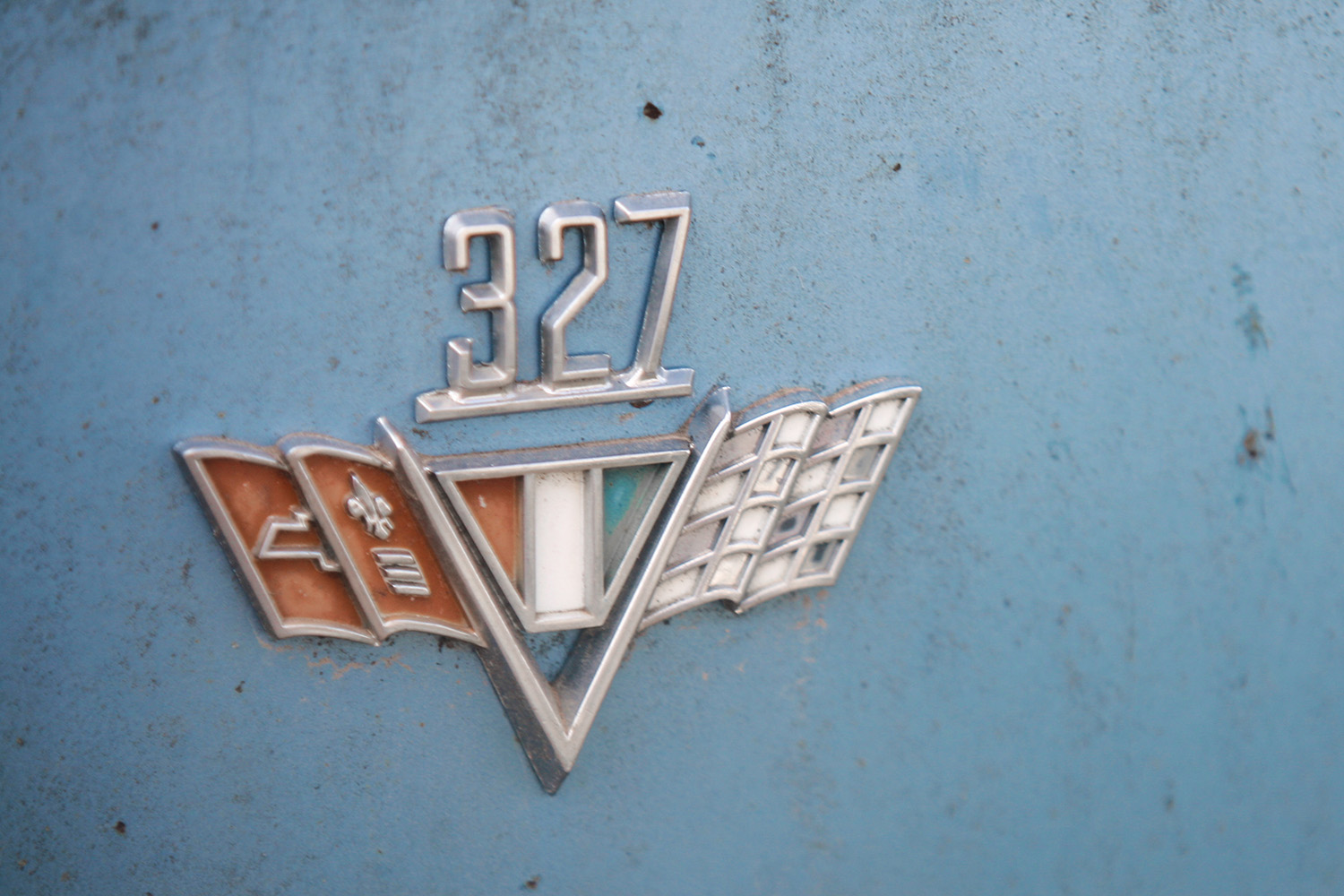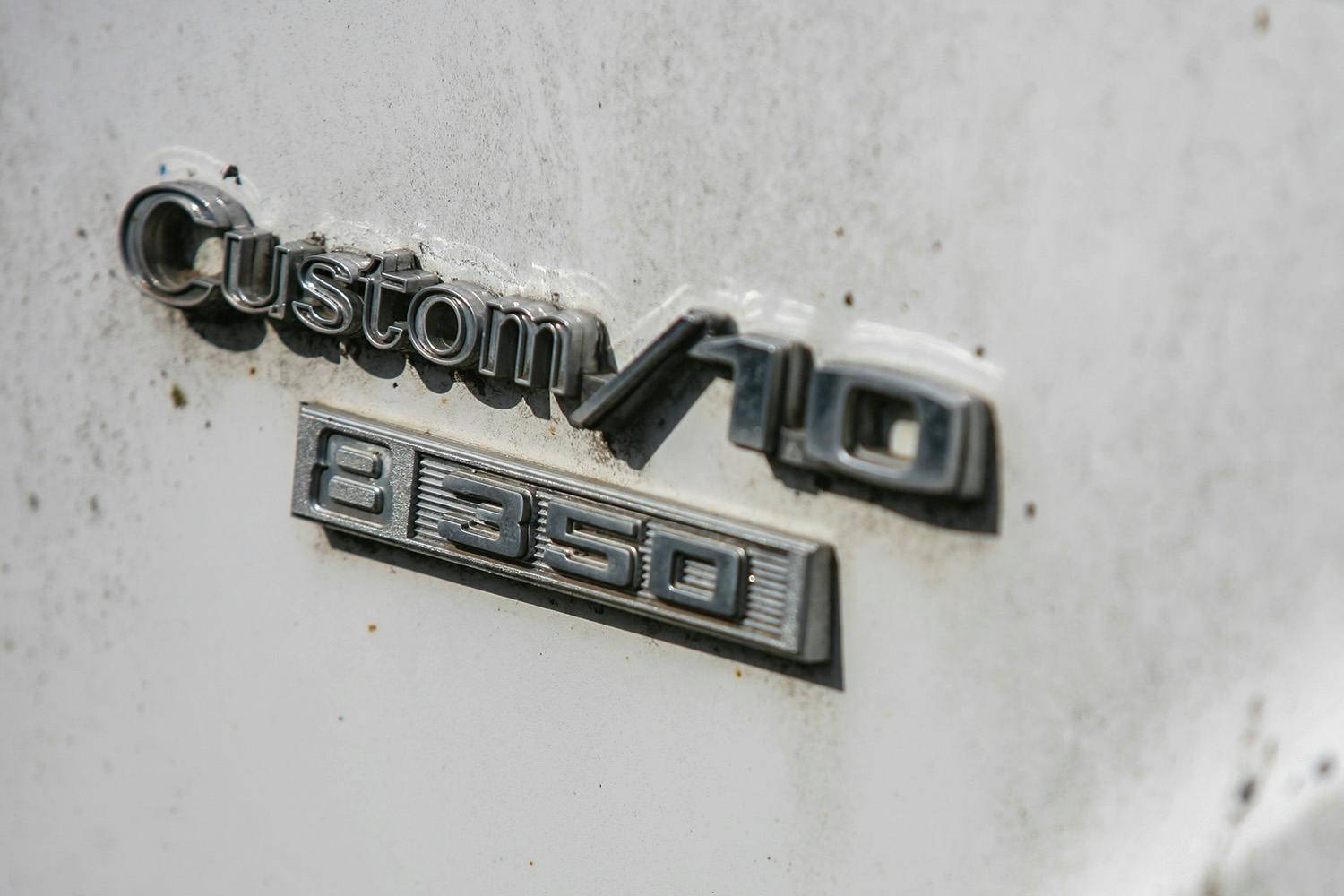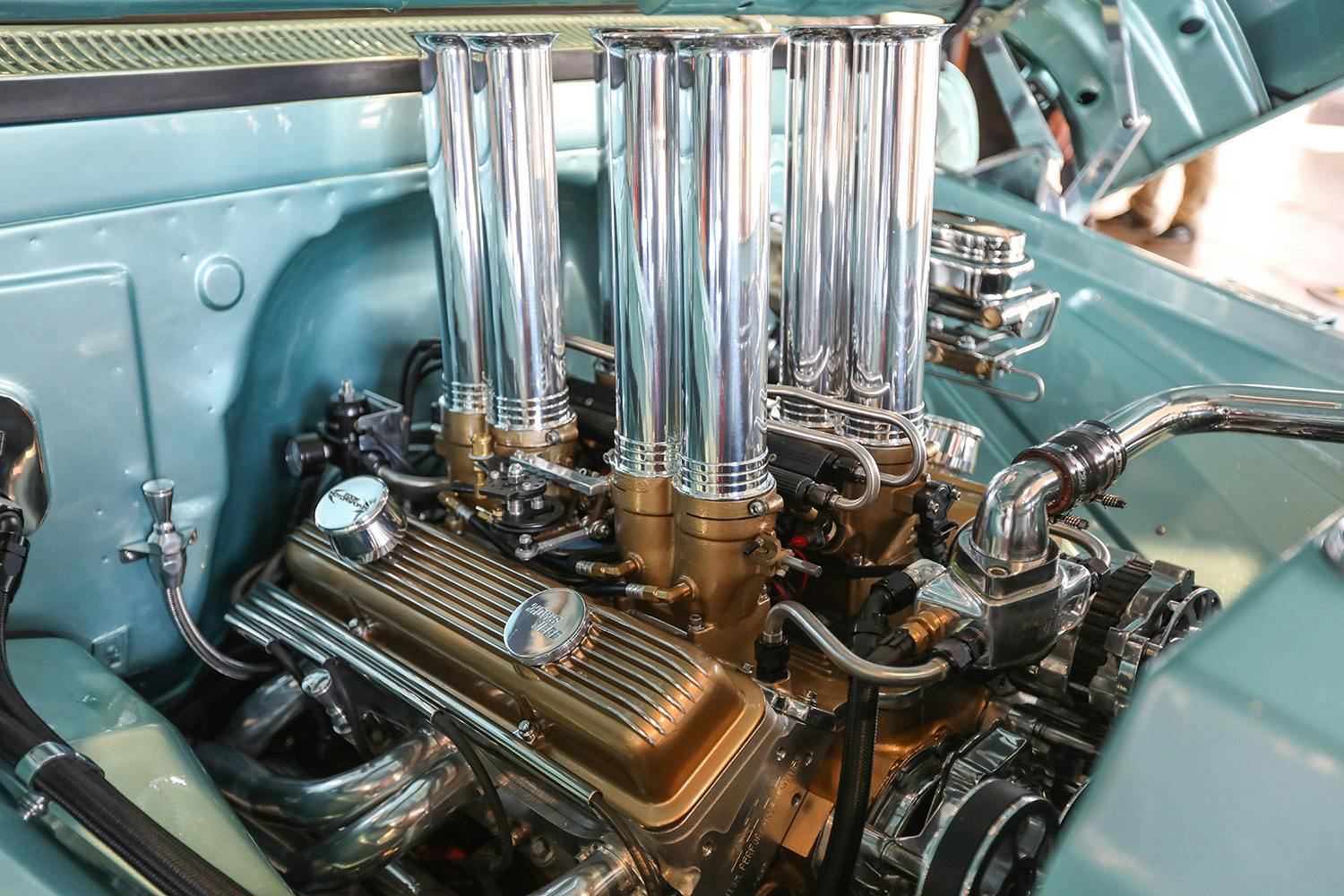Media | Articles
Brother from another mother: 11 shared engine displacements
Today it’s common to find engines from several manufacturers that share displacement figures. Engineers determined that 500 cc per cylinder is a sweet spot for efficiency with low emissions and, consequently, there are lots of 2.0-liter four-cylinders, 3.0-liter sixes, and 4.0-liter V-8s. Before that discovery, road taxes in some countries also influenced displacement. Plenty of manufacturers ended up with engines designed to fit under certain mandated thresholds.
In America, however, there were no such taxes. Engine displacement was seemingly determined by whatever fraction of an inch the engineer or machinist’s caliper decided to land on. Despite the endless number of bore and stroke combinations that those slide-ruler-wielding engineers could have selected, the resulting displacements often matched those from another manufacturer. As we’ll see, sometimes the common displacement wasn’t by coincidence.
We’re gonna keep the metric measurements to a minimum. Dive into 11 engine displacements shared by different American manufacturers.
302
Thanks to its long-time use of the engine in everything from the Falcon to the Galaxie, the 302 is nearly synonymous with Ford. The engine was used in the GT40 but perhaps its most notable role was in the Mustang, when a series of Boss 302 models enjoyed significant Trans Am success. Of course, it was the SCCA’s 5.0-liter limit in Trans Am that also led Chevrolet to develop its own 302 small-block, using the same 4.0-inch bore and 3.0-inch stroke that Ford used to achieve the same displacement. Chevrolet only used its 302 V-8 in the 1967–69 Z/28 for North America, but it also appeared in South Africa’s Chevrolet Can-Am, a tiny coupe based on the Vauxhall Viva.
327
The Rambler V-8 first paired a 4.0-inch bore with a 3.25-inch stroke in 1957. The new 327 debuted in a limited run of Rambler Rebels. Still, it was Chevrolet that made the displacement famous. Solid-lifter 327s, most of them carbureted, offered a power-dense package born from racing. The fuel-injected L84, available only on the Corvette, made the 327 engine even more powerful—and also quite a beautiful specimen when the hood was popped.
Marketplace
Buy and sell classics with confidence
350
Four of GM’s divisions had their own 350-cubic-inch V-8, and each was unique. Buick’s largest small-block achieved its displacement—which was actually 349 cubic inches—with an almost perfectly square 3.8-inch bore and 3.85-inch stroke. It was used in full-size Jeeps before AMC replaced it with its own V-8. Oldsmobile’s oversquare 350, with its 4.057-inch bore and 3.385-inch stroke, saw some performance duty thanks to the W31 package that borrowed parts from its 455 cousins. Pontiac’s 350 displaced 354 cubic inches thanks to a 3.875 bore and 3.75-inch stroke. In its high-output form, with large-valve heads and a more aggressive cam, it was a formidable power plant in the Firebird. Finally, Chevy’s 350, the result of a 4.0-inch bore and 3.48-inch stroke, is the most ubiquitous iteration. Debuting in the Camaro in 1967, it became the default small-block Chevy displacement for decades and has likely powered more hot-rodded cars, trucks, and boats than any other engine in history.
351
Ford built two versions of the 351—Windsor and Cleveland—each named after its manufacturing location. The 351 Windsor was essentially a tall-deck version of the 302 with a 3.5-inch stroke. The 351 Cleveland had identical bore, stroke, and bore spacing, but used a different block. Cleveland heads feature canted valves and offers tremendous performance potential. It’s possible, with the right intake and some machining, to mount Cleveland heads on the more readily available Windsor block to create what enthusiasts have dubbed a “Clevor” engine.
There’s also another, lesser-known 351, this time a V-6. GMC’s truck engine family spawned V-6, V-8, and V-12 engines and the smallest one, at 305 cubic inches, was found in GMC pickups and Suburbans throughout the 1960s. The 351 V-6 used the same 3.58-inch stroke as the 305, but increased to bore to 4.56inches. You can find them under the hoods of medium-duty trucks.
360
Mopar, AMC, and Ford all built 360-cubic-inch V-8s. AMC’s 360 debuted in 1970 and would last until the Jeep Wagoneer left production in 1991. Despite its smaller 4.080-inch bore compared to its 390 and 401 big brothers, there’s still quite a lot of performance to be had from the 360. Perhaps the most recognizable 360, Mopar’s small-block used a 4.0-inch bore and 3.58-inch stroke and saw duty in cars, vans, and trucks. It began as an LA small-block that evolved into the Magnum and lasted until the Gen III Hemi replaced it. Ford built the 360 on its FE V-8 architecture. It served admirably in trucks from 1968–76.
390
The same 4.05-inch bore from Ford’s 360 FE engine netted 390 cubic inches when paired with a 3.785-inch stroke. Although the displacement seems to have faded from modern memory, it was the engine that powered the most famous Mustang ever built. AMC’s 390 was only built from 1968–70 before it was supplanted by the 401, yet its strong performance in the AMX cemented its legacy.
400
Chevrolet’s big-block 396 eventually ended up displacing 402 cubic inches after the bore changed from 4.094 to 4.124 for 1970. Chevrolet continued calling it “396” in some applications and labeled 400 in others. To make things even more confusing, Chevrolet expanded its small-block in 1970 using a 4.125-inch bore and 3.75-inch stroke. Different recipe, same result: 400 cubic inches. Buick’s 400 V-8 was the smallest of its big-block line, with a 4.04-inch bore and 3.9-inch stroke. Mopar’s 400 big-block V-8 used the largest bore of any production Mopar V-8 at 4.343 inches, making it ripe for a stroker build.
But wait, there are more: a Ford Cleveland-based 400M V-8 with a 4.00-inch bore and stroke and two Oldsmobile V-8s—first a 4.0-inch bore and 3.975-inch stroke version in 1965–67 followed by an undersquare 3.87-inch bore and 4.25-inch stroke version in 1968 and 1969.
401
Before there was the big-block Buick family that gave us the 400 and 455, there was the Nailhead. The 401, Buick’s largest Nailhead available in A-bodies, made 325 horsepower in 1966 Skylark GS guise. Tommy Ivo joined four Nailheads together in a series of exhibition dragsters. AMC’s 401 didn’t get the same showboat treatment. Still, its prowess on the street in AMX and Javelin trim couldn’t be overlooked. It also powered full-size Jeeps, giving them ample torque for off-roading and towing.
427
NASCAR and FIA both had racing classes that limited engine displacement to 7.0 liters. That explains why there are so many engines right around that displacement, including Mopar’s 426 Hemi. Chevrolet’s big-block 427 powered some of the brand’s most collectible Corvettes, while Ford’s 427 was famously used in the most brutal versions of the Shelby Cobra.
428
Pontiac’s 428 V-8, used in full-size muscle cruisers and dealer-installed in place of the stock 400 V-8 in some GTOs, actually displaced 427 cubic inches by way of a 4.12-inch bore and 4.0-inch stroke. Chevrolet’s LS7 small-block, often advertised as a 427, actually displaced 428 cubic inches. It used a 4.155-inch bore and 4.0-inch stroke. Ford’s 428 achieved similar displacement to the 427 that used the same FE engine architecture. The 428’s smaller bores (4.135 versus 4.235 inches) made it more forgiving during casting. Also used in the Shelby Cobra, the 428 was probably more famous for powering Mustang and Torino bruisers on the street and drag strip.
455
Like the 350, GM’s Buick, Olds, and Pontiac divisions each had unique 455 engines with different bore/stroke combinations. Pontiac’s 455 displaced 456 cubic inches using a 4.1525-inch bore and 4.21-inch stroke. It was used in land yachts and cruisers but also the GTO and Firebird/Trans Am. Oldsmobile, like Pontiac, didn’t have a true big-block and also relied on a long stroke to arrive at 455 cubic inches. Buick, thanks to its big-block’s bore spacing, got the largest bore, at 4.31 inches, and the shortest stroke, at 3.9 inches. The Buick 455 offered not only plenty of horsepower, but the highest torque rating of the three, with an advertised 510 lb-ft. When equipped with the Stage II package, the GSX was every bit as formidable on the strip as the lauded 426 Hemi.
Bonus: 383
Mopar dropped its big-block 383 into family cars and performance cars alike. There was also an MEL (Mercury-Edsel-Lincoln) with a 383-cubic-inch displacement from 1958–60. However, it’s the 383 Chevy small-block that became the standard-bearer for the displacement. As it was never installed by Chevy at the factory, that’s a strange honor. It’s likely the most well-known “stroker” displacement. It came to be by combining a Chevy 350 block bored .030 inches over with the 3.75-inch crank from a 400. Initially, it wasn’t that simple, as the 350 blocks and 400 cranks have different main bearing diameters. The aftermarket solved that with cast cranks that were ready to drop in. For decades, a 383 was the small-block to build for street and strip applications. If a 350 crank requires machine work during a rebuild, the cost of adding some extra displacement is often too low to ignore.
Did we forget one of your favorites? Let us know in the comments.










































You forgot the Studebaker/Ford 289!